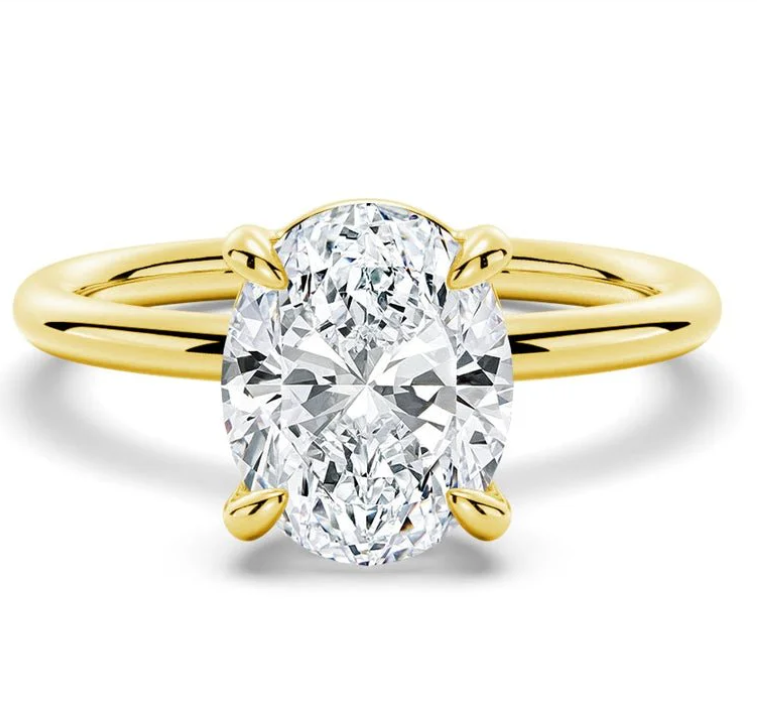Moissanite or Lab-Grown Diamonds: Which One is Perfect?
Moissanite or Lab-Grown Diamonds: Which One is Perfect?
If you're in the market for alternatives to natural gemstones and diamonds, you might have heard of moissanite and lab-grown diamonds. Moissanite and lab-grown diamonds are not the same thing, and understanding their differences is crucial. Today, consumers have a plethora of alternatives to mined diamonds to choose from. Moissanite is often confused with synthetic and lab-grown diamonds.
What Are Lab-grown Diamonds?
Lab-grown diamonds are identical to naturally mined diamonds in optical and chemical properties. Lab-grown diamonds are synthetic alternatives to diamonds, produced without environmental risk using highly specialized techniques, equipment, and responsibly sourced materials.
How Are Lab-grown Diamonds Made?
Lab-grown diamonds replicate the conditions under which natural diamonds are formed in the Earth's crust, but in controlled and supervised environments, using advanced technology.
Lab-grown diamonds are manufactured through two different processes: Chemical Vapor Deposition (CVD) or High Pressure High Temperature (HPHT) methods. Both CVD and HPHT methods produce high-quality lab-grown diamonds that meet gemstone standards, possessing the same chemical and physical properties as natural diamonds.
What is Moissanite?
Moissanite is a gemstone discovered by French chemist Henri Moissan in 1893 in Arizona, hence the name Moissanite. Made from silicon carbide, moissanite is often used as a diamond alternative due to its durability, brilliance, and affordability. Moissanite is renowned for its exceptional brilliance and fire, referring to its ability to reflect and refract light.
How is Moissanite made?
Moissanite on Earth forms from the mineral silicon carbide. To create brilliant gemstones in the lab, the natural process is replicated using a combination of heat and pressure. The moissanite crystals are then shaped, cut, and faceted into various sizes, shapes, and carat weights, ready to be set into jewelry or sold as loose stones.
Natural silicon carbide exists in kimberlites, peridotites, and meteorites, but in rare quantities. Lab-created moissanite makes it more accessible to audiences worldwide, perfect for those who appreciate this incredible gemstone from the cosmos.
What Are the Differences Between Moissanite and Lab-grown diamonds?
Moissanite and lab-grown diamonds possess similar characteristics to natural diamonds but are typically more affordable. While the two gemstones may appear similar, they differ in brilliance, durability, color, and price.
Composition
Diamonds are the only gemstone made of a single element, consisting of 99.95% carbon. Moissanite is composed of silicon carbide (SiC).
Durability
Gemstones are graded on the Mohs scale to determine their resistance to surface scratching. Moissanite gemstones have a Mohs rating of 9.25, while lab-grown diamonds have a Mohs rating of 10, both excellent scores indicating suitability for everyday wear in engagement rings and high-end jewelry.
Refractive Index
Gemstones are evaluated based on their refractive index, which measures the amount of light that passes through the mineral. The refractive index of moissanite ranges from 2.648 to 2.691, with a dispersion of 0.104, allowing it to disperse light into a stunning rainbow spectrum. Moissanite exhibits a fiery brilliance, appearing exceptionally bright. The refractive index of a diamond is 2.42, with a dispersion of 0.044, and its brilliance is not as intense as moissanite—moissanite is actually known as the world's most brilliant gemstone!
Color
Lab-grown diamonds, like natural diamonds, may vary in color. They are graded using the same internationally recognized standards (D-Z, colorless to light yellow or brown). Moissanite is not graded according to diamond color grading standards, but they typically fall within the same color range. Moissanite used in high-end jewelry can be colorless, near colorless, or colored.
Price
While lab-grown diamonds are cheaper than natural diamonds, their prices vary depending on shape, carat weight, cut, color, and clarity. Moissanite gemstones are much cheaper than natural diamonds and lab-grown diamonds, with prices varying based on size, color, and clarity.
Which is Better: Lab-grown Diamonds or Moissanite?
Moissanite is a lab-created gemstone with a high refractive index, emitting more "fire" or color than diamonds. It's also cheaper than diamonds, making it a popular choice for those seeking the diamond look without the hefty price tag.
In contrast, lab-grown diamonds possess the same chemical composition and physical properties as natural diamonds, making them nearly indistinguishable from mined diamonds. They are also more ethical and environmentally friendly than natural diamonds since they are grown in labs rather than extracted from the Earth.
The ultimate decision between Moissanite and lab-grown diamonds depends on personal preference, budget, and intended use. If you value the traditional status of diamonds and are willing to spend more for something different yet exquisite and timeless, lab-grown diamonds may be the better choice. However, if you want a cheaper alternative that sparkles brightly, Moissanite is the perfect substitute for lab-grown diamonds, captivating with its lab-created allure.





















